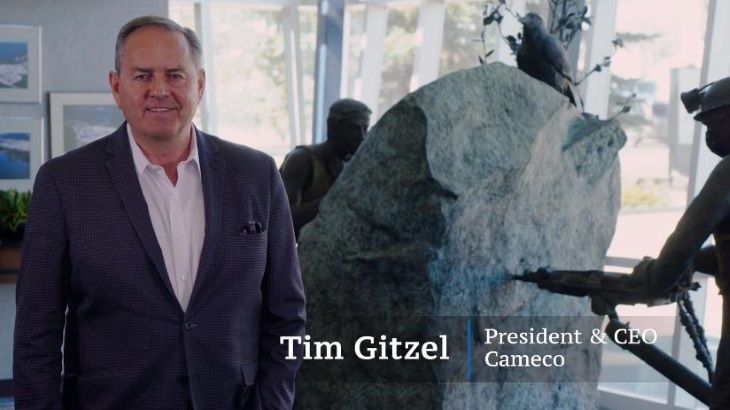Cameco buoyed by global interest in nuclear

"Nuclear is getting another look and there's growing recognition that it must be an important part of the solution to the climate crisis," Gitzel said. "That's the basis for our excitement for the future. We believe all the right fundamentals are in place and we remain very bullish on the uranium market. We at Cameco are in a great position to benefit from this renewed focus on nuclear power and the nuclear industry."
Cameco this week announced plans to restart production later this month at its Cigar Lake uranium mine in northern Saskatchewan, Canada, which was suspended in December last year in response to the COVID-19 pandemic. Meanwhile, Orano Canada said it will resume production at its McClean Lake uranium mill, where ore from Cigar Lake is processed.
Cameco's headquarters in Saskatchewan are about 700 km south of its Tier 1 assets in the uranium-rich Athabasca Basin.
Gitzel said that, at the start of the pandemic, Cameco announced a CAD1 million (USD0.8 million) COVID Relief Fund, from which it sent financial aid to 40 different communities in its region. Its employees prepared 1200 care packages to send to remote and vulnerable northern communities.
"This is home to many of our employees and we knew we had to do whatever we could to help," Gitzel said. "So, together with our airline partners, we delivered over 42,000 pounds of goods to the North."
The company has been "safely and diligently" focusing on digital transformation and the innovations needed to transform McArthur River and Key Lake into "the mine and mill of the future", he said. "So when it's time for them to reopen, they will be leaner, more agile and ready to roll."
Its digital transformation will be launched across the entire company, from its Cigar Lake mine in northern Saskatchewan to its fuel services divisions in Ontario, in Blind River and Port Hope.
"This project is changing how we work, making us better, safer and more efficient. While it's an exciting time for our company, it's also an exciting time for our entire industry. Around the globe we are seeing an increasing focus on electrification for various reasons. There are those that are installing baseload power, those who are looking for a reliable replacement to fossil fuel sources, and finally there's new demand for electrification of transportation.
"This is occurring precisely at the same time that countries and companies around the world are making net-zero emissions commitments. Today, the world relies on fossil fuels for about 80% of its energy supply, so we've got a long way to go to reach the targets we're looking at, and the demand for both electrification and decarbonisation."
From a policy point of view, there's a recognition, he said, that nuclear will be needed to achieve sustainably both electrification and decarbonisation, noting that Canadian Minister of Natural Resources Seamus O'Regan has said on numerous occasions that "there is no solution to climate change and CO2 reduction that doesn't involve nuclear".
Bruce Power and OPG produce 60-65% of the Province of Ontario's power from nuclear energy, he noted, China and India are "continuing to lead the way" in pushing ambitious nuclear plans, and the world's largest nuclear market, the USA, has recently re-committed to the Paris Agreement and "has designs on re-establishing the country's position as the global leader in the development of commercial nuclear technologies".
"We've got great people, great assets, a great strategy and a strong balance sheet; all of the ingredients necessary for a bright future, energising a clean air world," he said.
_59102.jpg)
_49833.jpg)







_66488.jpg)


